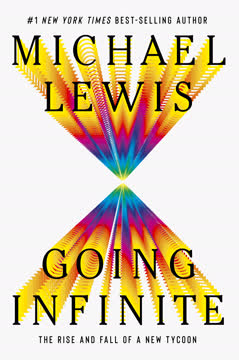Key Takeaways
1. The Video Game Industry's Evolution: From Product to Service to Media
"Video games have flourished as a topic of academic and pop-cultural inquiry."
Three distinct eras. The video game industry has undergone a remarkable transformation over the past few decades. It began as a product-based business, selling physical game cartridges and discs through retail channels. This model dominated from the 1980s through the early 2000s.
Digital revolution. With the advent of broadband internet, the industry shifted to a service-based model. Games became downloadable, constantly updated, and monetized through microtransactions. This era, beginning around 2008, saw the rise of mobile gaming and free-to-play titles.
Media convergence. Now, the industry is entering a third phase where games are becoming a form of media, competing for attention with movies, TV, and music. This includes the growth of esports, game streaming, and subscription services. The lines between gaming and other forms of entertainment are blurring, creating new opportunities and challenges for the industry.
2. Business Model Innovation as Critical as Game Design
"Game companies compete on strategy as much as they do on creating unique interactive experiences."
Dual innovation. Successful game companies innovate not just in game design, but also in their business strategies. This dual focus has been crucial to navigating the industry's rapid changes.
Adaptation examples:
- Nintendo revived the industry in the 1980s with quality control and consumer loyalty strategies
- Electronic Arts pioneered the "rock star" designer concept and built a global sales force
- Valve created Steam, revolutionizing digital distribution for PC games
- Supercell's lean, talent-focused structure led to mobile mega-hits
Continuous reinvention. Companies that fail to innovate in both game design and business models often struggle or fail, regardless of the quality of their games. The industry rewards those who can creatively solve both technical and strategic challenges.
3. Digital Distribution Revolutionized the Industry Landscape
"Valve created a market on its own terms and subsequently became the dominant PC distributor."
Disruptive force. Digital distribution, pioneered by platforms like Steam, fundamentally changed how games are sold and consumed. It eliminated physical production and distribution costs, enabling new pricing models and instant global reach.
Power shift. This change disrupted traditional retail channels and shifted power dynamics in the industry. It allowed smaller developers to reach audiences directly and gave rise to new genres and business models.
Market expansion. Digital distribution opened up new markets, particularly in emerging economies where traditional retail infrastructure was lacking. It also enabled the long tail of niche games to find sustainable audiences.
4. The Myth of the Lone Genius: Collaboration Drives Innovation
"Artistic innovation depends on interactions between artists, both in a collaborative and competitive sense."
Team effort. Contrary to popular belief, most successful games are not the product of a single visionary, but the result of collaborative efforts by diverse teams.
Ecosystem influence. Innovation in gaming is often driven by:
- Competition between companies
- Cross-pollination of ideas within the industry
- Collaboration between developers, artists, and business strategists
Organizational structure matters. Companies like Valve and Supercell have found success by creating flat organizational structures that foster creativity and collaboration, challenging traditional hierarchical models.
5. Expanding Demographics: Everyone is a Gamer Now
"Video games have evolved from the fringes to become one of the biggest and fastest-growing segments during a period characterized by two developments in particular: the widespread adoption of consumer broadband and the popularization of smartphones."
Broadening appeal. The gaming audience has expanded far beyond the stereotypical young male demographic. Women, older adults, and casual players now make up a significant portion of the market.
Accessibility drives growth. This expansion has been driven by:
- More intuitive and accessible game designs
- The ubiquity of smartphones as gaming devices
- A wider variety of game genres and styles
Cultural shift. Gaming has become a mainstream form of entertainment, rivaling movies and music in cultural impact and economic significance. This shift has implications for game design, marketing, and the industry's overall direction.
6. The Rise of Free-to-Play and Microtransactions
"Free-to-play gaming had grown from an oddity into an industry standard and has been eating into the profits of traditional content creators."
Paradigm shift. The free-to-play model, popularized by mobile and online games, has become a dominant force in the industry. It removes upfront costs for players but monetizes through in-game purchases.
Economic impact:
- Larger potential audience due to no initial cost
- Longer revenue streams from successful games
- Challenges in balancing game design with monetization
Market transformation. This model has disrupted traditional pricing strategies and forced even major publishers to adapt. It has also enabled the rise of "games as a service" with ongoing updates and content additions.
7. Esports and Streaming: New Frontiers of Gaming
"Watching other people play video games, and why."
Spectator gaming. Esports and game streaming have emerged as major new segments of the gaming industry, attracting millions of viewers and significant investment.
Cultural phenomenon. This trend has:
- Created new career opportunities for professional gamers and streamers
- Expanded gaming's cultural footprint
- Opened up new revenue streams through sponsorships and advertising
Marketing power. Esports and streaming have become crucial marketing channels for game publishers, influencing game design and business strategies.
8. The Resilience of Console Gaming in the Digital Age
"Despite the initial calls for the death of the console, many of the legacy firms have survived and continue to do well today."
Adaptation, not extinction. Despite predictions of their demise, console platforms have successfully adapted to the digital age. They've integrated online services, digital distribution, and subscription models.
Exclusive content strategy. Console makers have leveraged exclusive games and franchises to maintain their relevance and appeal.
Hybrid approach. Modern consoles blend traditional gaming experiences with digital services, creating ecosystems that extend beyond just playing games.
9. Mobile Gaming: Opportunity and Challenge
"The myth of the mobile millionaire: the idea that ten years after it took off, the mobile category remains an accessible marketplace in which anyone with a good idea can become a successful smartphone-based game developer."
Massive market. Mobile gaming has grown into the largest segment of the gaming industry, driven by widespread smartphone adoption and accessible game designs.
Intense competition. While the mobile market offers opportunities for small developers, it has become increasingly dominated by large companies with significant marketing budgets.
Evolving landscape. The mobile gaming market continues to evolve, with trends like:
- Hyper-casual games
- Cross-platform titles
- Integration with other mobile services
10. The Strategic Importance of Intellectual Property in Gaming
"IP with such broad appeal can dramatically reverse a studio's fortunes."
Franchise power. Owning strong intellectual property has become a crucial strategy for game companies. Popular franchises can:
- Reduce marketing costs for new releases
- Enable spin-offs and cross-media opportunities
- Provide a competitive edge in a crowded market
Licensing strategies. Many companies leverage existing IP from other media (movies, books, sports) to create games with built-in audiences.
Balancing act. Successful IP management requires balancing between exploiting existing franchises and creating new properties to avoid stagnation.
11. The Future of Gaming: Cloud, Subscriptions, and Advertising
"Now that video games are a mainstream form of entertainment, the underlying economics that drive this industry have shifted."
Cloud gaming. The advent of cloud gaming promises to remove hardware barriers, potentially disrupting the traditional console and PC markets.
Subscription models. Game subscription services, similar to Netflix for movies, are becoming increasingly prevalent, offering new revenue streams and changing how games are consumed.
Advertising potential. As games reach broader audiences, in-game advertising and sponsorships are becoming more viable revenue sources, particularly for free-to-play titles.
Industry convergence. These trends are leading to increased convergence between gaming and other media industries, with tech giants like Google, Amazon, and Apple investing heavily in gaming.
Last updated:
FAQ
What is One Up: Creativity, Competition, and the Global Business of Video Games by Joost van Dreunen about?
- Comprehensive industry overview: The book analyzes the evolution of the video games industry, focusing on how creativity and competition have shaped its global business landscape.
- Business and creativity interplay: It explores the balance between creative innovation and business strategy, showing how both are essential for success in gaming.
- Industry transformation: The narrative covers the shift from physical products to digital services and media, highlighting the impact of digitalization and globalization.
- Key players and trends: Van Dreunen examines major companies, market dynamics, and technological innovations that have made gaming a mainstream entertainment form.
Why should I read One Up by Joost van Dreunen?
- Unique business perspective: The book offers a rigorous, data-driven analysis of the video games industry, often overlooked in favor of creative discussions.
- Bridging creative and financial gaps: It provides valuable insights for creatives, investors, and professionals by connecting creative aspirations with financial realities.
- Case studies and real-world examples: Readers learn from the successes and failures of industry leaders like Valve, Blizzard, and Electronic Arts.
- Understanding future trends: The book equips readers with knowledge about emerging business models, esports, and the future of interactive entertainment.
What are the key takeaways from One Up by Joost van Dreunen?
- Business creativity is crucial: Success in gaming requires as much innovation in business models as in game design.
- Industry complexity: The video games ecosystem involves developers, publishers, retailers, platform holders, and consumers, all adapting to rapid change.
- Ongoing evolution: Digitalization, globalization, and shifting demographics will continue to reshape the industry, demanding constant innovation.
- Interdependence of creativity and commerce: The book emphasizes that creative and business strategies are deeply intertwined in shaping the industry’s future.
How does Joost van Dreunen structure One Up and what does each part cover?
- Part 1 – Games as a Product: Examines the traditional product-based model, the history of game publishing, and the challenges of physical distribution.
- Part 2 – Games as a Service: Focuses on the shift to digital distribution, the rise of mobile and casual gaming, and the resilience of the console and PC markets.
- Part 3 – Games as Media: Explores intellectual property licensing, live streaming, esports, and new revenue models like advertising and subscriptions.
- Comprehensive approach: Each part builds on the previous, illustrating the industry’s transformation from products to services to media.
What are the main business models discussed in One Up by Joost van Dreunen?
- Product-based publishing: Traditional model with upfront payments for physical or digital games, dominant in early gaming history.
- Service-based publishing (Games as a Service): Focuses on ongoing content, microtransactions, and player engagement over time, lowering entry barriers for both players and developers.
- Emerging media models: Includes advertising and subscriptions, shifting the focus to audience engagement and recurring revenue.
- Hybrid approaches: The book suggests the future will blend direct payments, microtransactions, advertising, and subscriptions.
How does One Up by Joost van Dreunen explain the impact of digitalization on the video games industry?
- Transformation to digital services: Digitalization shifted gaming from physical retail to digital downloads, enabling new business models like microtransactions.
- Market expansion: Broadband and smartphones expanded the gaming audience to billions, making gaming mainstream.
- New challenges: Issues like piracy, cloning, and localization emerged, altering the economics and competition in the industry.
- Changing consumer behavior: Digitalization changed how games are marketed, sold, and played, impacting traditional retailers and publishers.
What does Joost van Dreunen say about the evolution and challenges of GameStop in One Up?
- Retail dominance: GameStop became the largest specialty games retailer through aggressive expansion and innovative trade-in programs.
- Trade-in economics: Its buy-sell-trade model generated significant revenue from used games, offsetting thin margins on new titles.
- Digital disruption: The rise of digital distribution and online retailers like Amazon threatened GameStop’s traditional business model.
- Adaptation struggles: GameStop’s challenges illustrate the broader retail shift in the gaming industry.
How does One Up by Joost van Dreunen address the rise and impact of free-to-play and mobile gaming?
- Origins in Asia: Free-to-play models emerged in South Korea and China, where games were accessed in internet cafes and monetized through microtransactions.
- Audience expansion: Mobile and casual games brought a broader, more diverse audience into gaming, breaking old stereotypes.
- Business model innovation: Freemium and free-to-play models lowered entry barriers and changed monetization strategies, but also led to intense competition and price deflation.
- Market challenges: Despite accessibility, mobile gaming became highly competitive, with a small percentage of users driving most revenue.
What insights does One Up by Joost van Dreunen provide about the resurgence of PC gaming and the role of Steam?
- Early challenges: PC gaming once lagged behind consoles due to hardware variability and piracy.
- Valve’s innovation: Steam democratized publishing, allowing small developers to release games with minimal upfront costs and automating updates.
- Marketplace transformation: Steam’s low barriers led to a crowded market, price deflation, and shorter playtimes, but revitalized PC gaming overall.
- Community and modding: Steam fostered modding communities and online multiplayer, further boosting PC gaming’s appeal.
How does Joost van Dreunen explain the importance and challenges of intellectual property (IP) in the video games industry in One Up?
- Foundation for strategy: IP, whether original or licensed, is central to creative and business strategies in gaming.
- Licensing pros and cons: Licensing offers marketing advantages but comes with creative restrictions, legal complexities, and financial risks.
- Success stories: Pokémon and Angry Birds are highlighted as examples of masterful IP development and cross-media expansion.
- Risk management: Developing or licensing IP helps studios manage risk and signal value to consumers.
What does One Up by Joost van Dreunen reveal about the rise of esports and gaming video content?
- Esports evolution: Esports began in South Korea and grew into a global phenomenon with professional leagues and large audiences.
- Marketing and revenue: Esports serves as both a marketing tool and a new revenue stream for publishers.
- Streaming platforms: Twitch and YouTube have made watching games mainstream, turning streamers into celebrities and tastemakers.
- Industry impact: Esports and streaming reshape publisher-player relationships, marketing, and content design, but face challenges like regulation and reliable metrics.
How does Joost van Dreunen in One Up challenge the myth of the "lone genius" in game development?
- Myth debunked: The book argues that the idea of the singular genius is a fabrication, often used as a marketing strategy.
- Collaborative creativity: Game development success is shown to result from diverse, collaborative teams rather than individual brilliance.
- Economic and business influence: Creative output is shaped by economic constraints, business decisions, and market conditions.
- Historical parallels: The book draws on art history to show that innovation arises from networks and competition, not isolated individuals.
Review Summary
One Up receives mostly positive reviews for its comprehensive analysis of the video game industry's history, business models, and evolution. Readers appreciate the book's insights into industry dynamics, monetization strategies, and market forces. Some find it academically dry but informative, praising its data-driven approach and ability to challenge preconceptions about gaming. The book is recommended for industry professionals, investors, and gaming enthusiasts seeking a deeper understanding of the business side of video games. A few critics note its publication date limits coverage of recent events.
Similar Books










Download PDF
Download EPUB
.epub digital book format is ideal for reading ebooks on phones, tablets, and e-readers.




